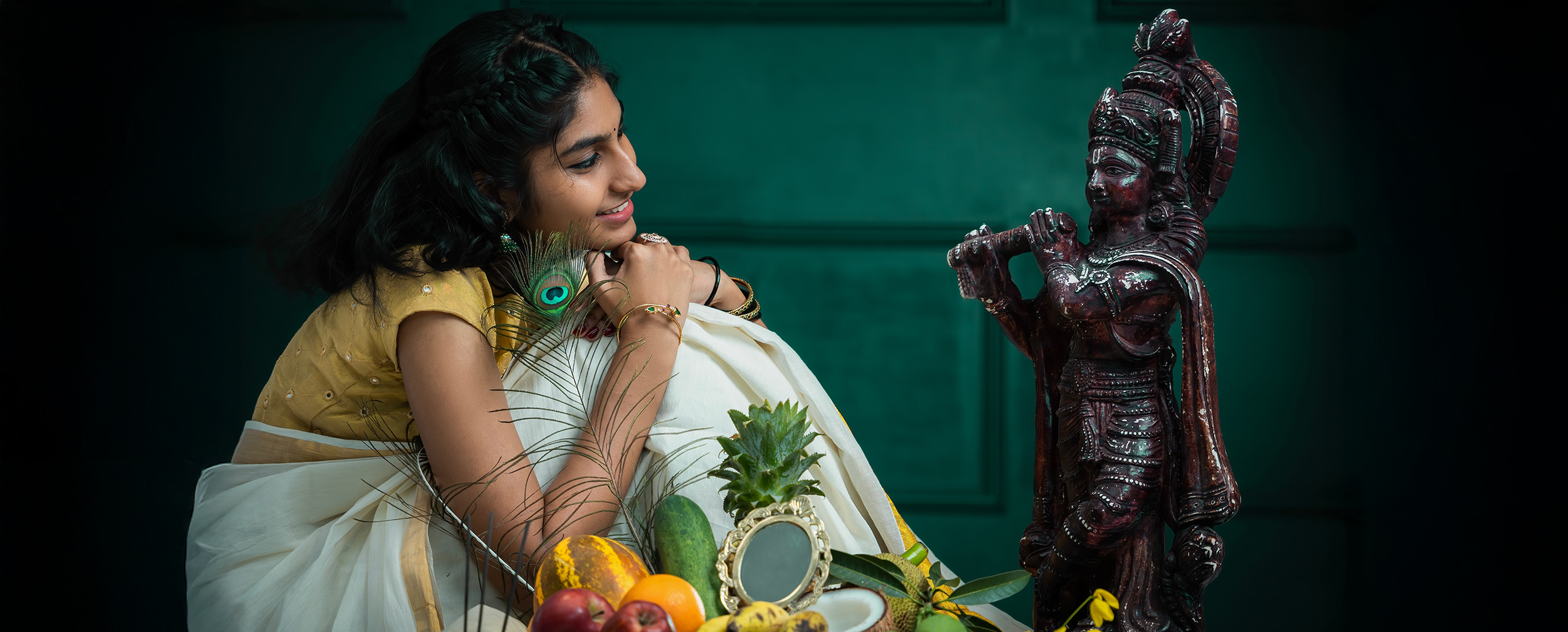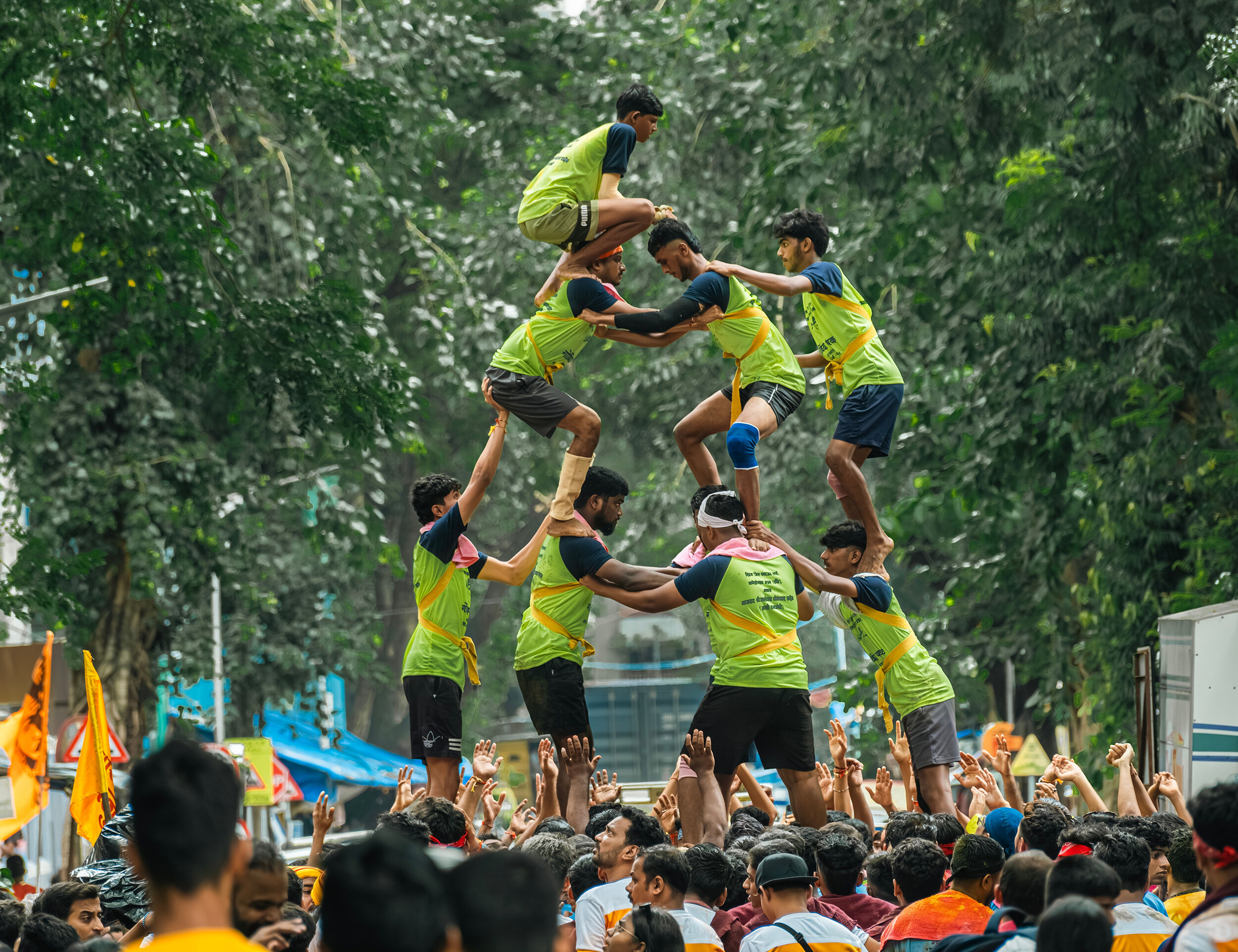STORIES BY DIWAS

Lifestyle
From Midnight Prayers to Dahi Handi: Decoding What Is Janmashtami for First-Timers
Date 12 August 2025 Reading time: 7-10 mins
Midnight strikes, and the temple bells ring out across India. Homes glow with lamps, devotional songs fill the air, and families gather in prayer to welcome the birth of Lord Krishna. That magical moment marks the heart of what is Janmashtami—a festival where devotion and joy dance together in perfect harmony.
The Janmashtami story carries profound lessons that continue to inspire millions, from the miracle of Krishna’s birth in a prison cell to His divine childhood antics that capture our hearts even today.
Whether you're planning to join community celebrations or create your own meaningful observance at home, this guide will walk you through everything about Janmashtami—its Janmashtami history, rituals, and the colourful customs that reflect the significance of Krishna Janmashtami.
What is Janmashtami?
“Krishna Aala Re!” This familiar chant echoes through streets as communities prepare for the grand celebration of Lord Krishna’s birth. But what is Janmashtami at its core?
About Janmashtami, also known as Krishna Janmashtami or Gokulashtami, the festival marks the earthly appearance of Lord Krishna, who is revered as the eighth avatar of Lord Vishnu.
According to the Hindu lunar calendar, this auspicious day falls on the eighth day (Ashtami) of the dark fortnight (Krishna Paksha) in the month of Bhadrapada.
The Janmashtami story begins over 5,000 years ago in Mathura. Lord Krishna was born to Devaki and Vasudeva while they were imprisoned by the tyrant Kansa. In a miraculous event, the prison doors opened, chains fell, and Vasudeva carried the baby across the flooded Yamuna River to safety in Gokul.
Beyond Janmashtami history, what is Janmashtami in spiritual terms? It’s the divine promise to restore righteousness and guide humanity through love. It symbolises how the divine appears when hope is needed most.
The Significance of Janmashtami
When devotees gather in homes and temples adorned with flowers and lights, they're acknowledging that what Janmashtami is more than just a historical birthday. The significance of Krishna Janmashtami runs deep in the spiritual fabric of India.
The importance of Krishna Janmashtami also lies in its reminder of divine intervention in human affairs. Krishna didn't appear randomly; He came during a time of moral decline when righteousness needed restoration. This carries profound meaning for modern life, suggesting that divine help arrives when we face our darkest challenges.
The importance of Krishna Janmashtami in fostering community bonding cannot be overlooked. The festival brings together entire neighbourhoods for collective celebrations—sharing prasad (sacred food), singing bhajans (devotional songs), and participating in dramatic reenactments of the Janmashtami story. These communal activities strengthen social bonds while creating joyful memories across generations.
As families prepare for what is Janmashtami, they often discuss the Janmashtami story with children, ensuring these ancient traditions and values continue into future generations. Thus, what Janmashtami serves as is a living bridge between India’s spiritual heritage and its modern expressions, highlighting the importance of Krishna Janmashtami.
Spiritual Insights of Janmashtami
The mischievous butter thief of Gokul was also a philosopher-king who gifted the world the Bhagavad Gita. This contrast is why the Janmashtami story continues to captivate and inspire seekers of truth.
For many, the importance of Krishna Janmashtami lies in personal transformation. As Arjuna was guided by Krishna through internal conflict, we too can reflect on our own dilemmas during this festival.
One cannot fully understand what is Janmashtami without looking at the concept of divine incarnation. As Krishna said in the Gita, “Whenever dharma declines, I manifest.” This is the very heart of the Janmashtami story and the significance of Krishna Janmashtami.
In remembering this divine birth through Janmashtami history, we are reminded that spiritual guidance always finds us, especially in our darkest hours.
And most importantly, what is Janmashtami if not a celebration of divine love?
How is Janmashtami Celebrated?
Across India, what is Janmashtami is expressed in countless regional traditions, all of which centre around deep devotion.
The most defining feature of what is Janmashtami celebrations is timing: since Krishna was born at midnight, prayers and pujas peak at that sacred hour.
Communities gather for bhajan sandhyas, dance dramas, and Dahi Handi competitions—all commemorating the Janmashtami story. Kids dress as Krishna or Radha, reenacting scenes from Janmashtami history.
In Maharashtra, towering human pyramids recreate the butter-thief antics from the Janmashtami story. In Gujarat, Raas Garba events echo the divine love of Radha-Krishna. In Bengal, what is Janmashtami merges with Nandotsav, celebrating Nanda’s joy at Krishna’s arrival.
Each celebration reflects the significance of Krishna Janmashtami while adding regional flavour.
The Rituals and Traditions of Janmashtami
Understanding what is Janmashtami also means participating in its sacred rituals.
One of the core practices is the midnight Abhishek, where Krishna’s idol is bathed in panchamrit (a mix of milk, honey, ghee, sugar, and curd). This act purifies and honours His divine form.
Jhulanotsav is another treasured tradition where baby Krishna is gently rocked in swings. This symbolises the maternal affection that Yashoda showered upon Him.
Dramatic reenactments of the Janmashtami story, such as Ras Lila or Krishna Leela, draw heavily from Janmashtami history and help instill spiritual values through theater and music.
Together, these rituals reflect both the importance of Krishna Janmashtami and the significance of Krishna Janmashtami in maintaining cultural continuity.
The Importance of Fasting on Janmashtami
Fasting is central to what is Janmashtami, serving as an act of devotion and purification.
Many devotees observe Nirjal fasts (without water) or Phalahar fasts (fruit-based), reflecting the importance of Krishna Janmashtami as a spiritual discipline.
Going without food helps devotees focus inward. Hunger becomes a reminder of spiritual yearning and surrender. The midnight feast that follows is rich with dairy sweets like makhan mishri, foods linked directly to the Janmashtami story.
Such austerity emphasises the significance of Krishna Janmashtami as a journey from body to soul.
The Role of Devotional Songs and Dances
A big part of what is Janmashtami is its musical atmosphere. Bhajans like “Achyutam Keshavam” and “Govind Bolo Hari Gopal Bolo” narrate the Janmashtami story and help anchor spiritual attention.
Dance forms such as Ras Lila don’t just entertain—they reenact Janmashtami history and celebrate the love between Krishna and Radha.
The timeless beauty of the Janmashtami story lies in its universal appeal. Whether you're religious or spiritual, the themes of love, justice, and divine intervention remain relevant.
Understanding what is Janmashtami today is also about understanding its power to unite. The significance of Krishna Janmashtami shines brightest when it brings families together, renews faith, and rekindles joy.
Celebrating Janmashtami
As lamps are lit and bhajans echo in the August air, the true meaning of what is Janmashtami unfolds. It’s not just about myth—it’s about living the values Krishna embodied.
Whether you're teaching your children about Janmashtami, fasting, or attending a temple drama on the Janmashtami story, you’re participating in something ancient, beautiful, and enduring.
The importance of Krishna Janmashtami lies in its ability to blend joy, worship, and inner transformation. The significance of Krishna Janmashtami lies in reminding us that the divine is always close—especially when we choose to seek it.
For those celebrating this joyous occasion, dressing respectfully enhances the experience of devotion. Consider exploring Diwas' extensive collection of sherwanis, kurta pajamas and more designed to honour Indian culture while providing comfort during long hours of prayer and celebration.



